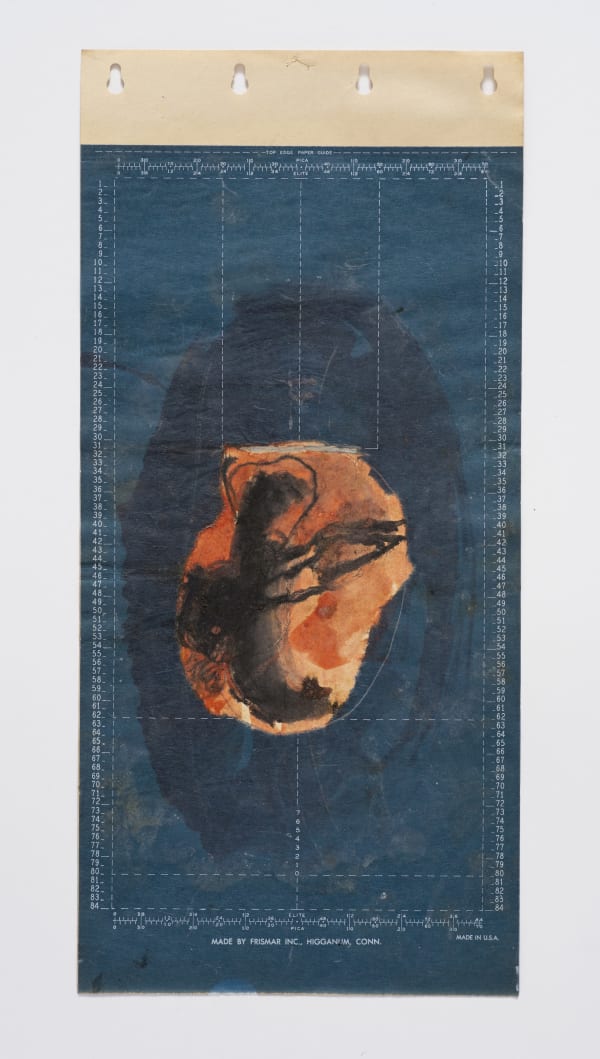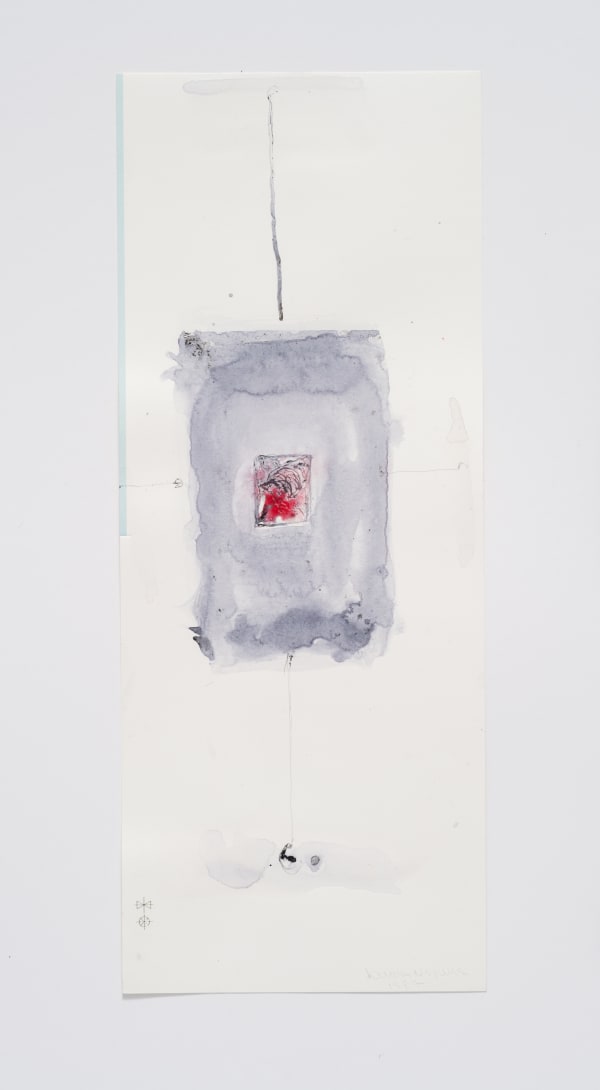-
Lucia Nogueira
October 06 2020 — January 23 2021Galeria Luisa Strina is pleased to present a solo exhibition with drawings and sculpture never shown in Brazil by Lucia Nogueira (1950-1998), a Brazilian artist who lived in London from the 1970s until the end of her life. Throughout her brief but notable career, Nogueira created a powerful body of multidisciplinary work. Focused mainly on sculptures and installations that became famous for the use of banal materials combined in a unique and amazingly precise way, her trajectory is marked by the constant practice of drawing. According to the curator of the retrospective dedicated to the artist at the Serralves Museum, Adrian Searle, drawings and sculptures / installations are inseparable in Nogueira’s work, given the tactile nature and the bodily sense – “strong sense of self”, as Searle calls it – that define her artistic temperament.
Organized in collaboration with the Anthony Reynolds Gallery, London, this exhibition presents an important series that did not integrate the retrospectives taken after the artist’s premature death [Drawing Room, London, 2005; Serralves Museum, Porto, 2007; Kettle’s Yard, Cambridge, 2011]: Inferno – Divine Comedy (1983), composed of 14 drawings made with pencil, charcoal and watercolor, which portrays the author’s very particular vision on a theme that mobilized artists throughout history, from Botticelli, Michelangelo, Delacroix, William Blake and Gustave Doré, up to Rodin, Dalí, Robert Rauschenberg and Alfredo Jaar. In Nogueira’s version, we identify Fortuna spinning her wheel, the boat that leads Dante and Virgílio on the descent to Hell, so ethereal and self-contained, in opposition to the incarnated romanticism and shrouded in darkness of Delacroix’s The Barque of Dante (1822), we see the torments of the soul, and a cerberus dog more minimalist and ambiguous than the Cerberus (1824-1827) of William Blake’s illustration for the Divine Comedy.
-
Inferno Divine Comedy
1983more detailspencil and watercolour on paper
14 partes: 27 x 37 | 40 x 30 cm [10.6 x 14.5 | 15.7 x 11.8]
According to Alberto Manguel, almost all of Dante’s books were written in exile, in houses that he could never consider his own because they were not in his Florence. “The incipit to his poem reveals the double bind: ‘Here begins the Commedia of Dante Alighieri, Florentine of nationality, not of morals.’ No doubt his hosts—Cangrande, Guido Novello, and the others—were kind to him and provided him with comfortable rooms and intelligent conversation, but home was always somewhere else, the place of absence. Banned from Florence, he must have felt that the city’s gate might have been a parody of the gate of Hell: its sign would be not ‘Abandon all hope you who enter’ but ‘Abandon all hope you who leave.’ And yet Dante was unable to give up all hope of returning home”, writes the Argentine author, an excellent reader of images and texts.
-
-
-
-
Perhaps Nogueira identified with Dante. She arrived in the United Kingdom from the United States in 1975, at the age of 25. A newcomer to the country, she found herself between two cultures. Regarding the gaps and displacement caused by the option to leave a place, the artist stated: “There is a connection there; not only with the place where you are, but also with the place where you come from – because if you left you didn’t solve things there, did you? So you’re in the middle. I think it’s very healthy to be like that ”.
-
-
Untitled
1988more detailsrope, bronze
4 x 100 x 60 cm [1.6 x 39.4 x 23.6 in] approx.
"The work of Lucia Nogueira is unique in the way in which it transforms the objects that it uses and relocates, in the sensorial situations with which it challenges the viewer's perspective intelligence, in the intimate violence it manifests, in the singularity of its imagery, in the instensity achieved through rarified actions, in the glorious creative hesitation with with which it faces its conflicts and doubts". [João Fernandez]
"...the permanent dichotomy expressed in the cultural divisions of my background is clear in the location of most of my work at the borderline between one consition and another." [Lucia Nogueira]
-
According to Gabriel Pérez-Barreiro, who dedicated a special room to the artist at the 33rd Bienal de São Paulo (2018), arguing that from then on a new relationship with the history of recent Brazilian art could be created, “in her works, the artist uses everyday objects to create an unsettling sensation of suspension and strangeness. When combining and confronting furniture, crates, plastic tubes and glass, she evokes mysterious and engaging dialogues, which seem to offer more questions than answers. As a Brazilian living in London, she speaks of the notion of displacement and the questions that result from living in a different culture, a situation in which the everyday and the obvious can become disconcerting. Perhaps because it is a consequence of this displacement, language is a central reference in her works; English titles usually play with double meanings and the idiosyncrasies of the grammatical terms of the language”.
-
other works
-
-
about the artist
Lucia Nogueira studied Journalism and Communication in Brasília and photography in Washington, D.C. In 1975 she visited London, where she would live and work for the rest of her life. She studied painting first at Chelsea College of Art (1976-1979) and then at the Central School of Art and Design (1979-1980). She received a residence grant from the Fondation Cartier in Versailles, in 1993, and won the Paul Hamlyn Foundation award in 1996. A retrospective exhibition of Nogueira’s work was presented at the Serralves Museum in Porto, Portugal, in 2007, and a special selection of her works was shown at the 33rd Bienal de São Paulo, in 2018. Nohueira’s works are in collections such as those of Tate, London, United Kingdom; Arts Council England, UK; Leeds City Art Gallery, UK; Henry Moore Foundation, United Kingdom; Serralves Museum, Portugal; Calouste Gulbenkian Museum, Portugal; Museum of Contemporary Art of Barcelona (MACBA), Spain, among others.



































